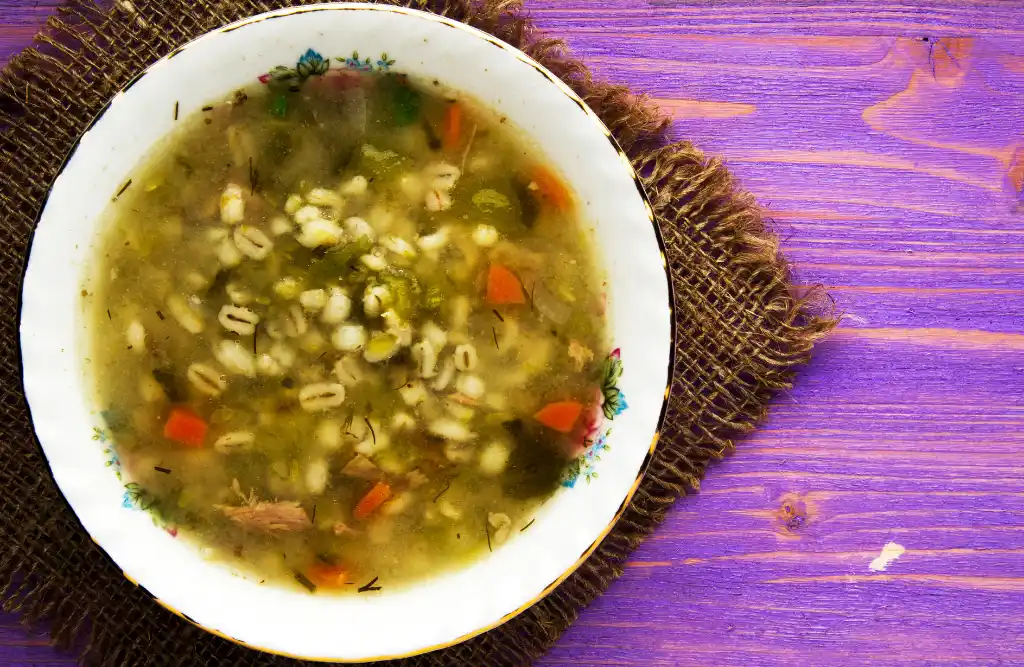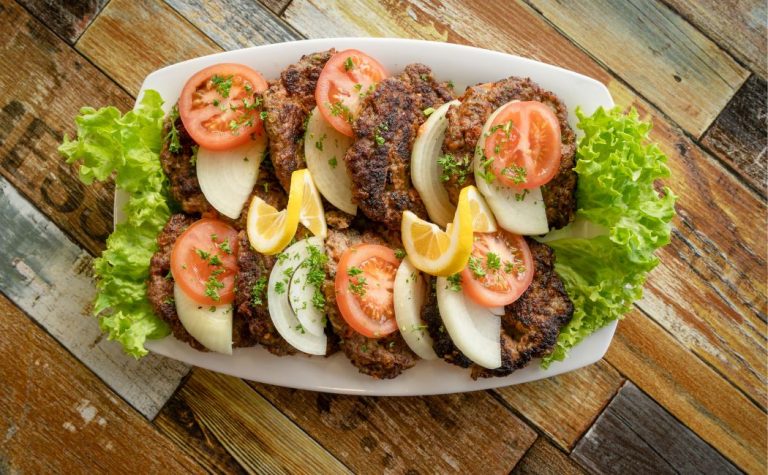Are Corn Flour Soup Good For Weight Loss? (Health Benefits and Diet Soup Recipe)

The age-old conundrum of what is good for weight loss and what is not is subject to widespread debate. Today, the topic that is central to our article is that of soup, and more specifically, ones that are made of corn flour.
Then comes the thickening agent. Some soups use all-purpose flour, some use wheat flour and some are thickened using corn flour. When it comes to the base, you can’t go wrong. But the question here is: Are Corn Flour Soup Good For Weight Loss?
So, to answer the question right off the bat, yes. Corn flour soup is good for weight loss. Why? Keep reading our article and find out.
What is Corn Flour?
Corn flour is obtained by grinding whole corn kernels into a thin powder which provides the body with considerable protein, starch, fiber, and other vitamins and minerals generally found in whole corn. It is a white powder and is produced by a range of different brands in Pakistan.
Are Corn Flour Soup Good For Weight Loss?
Low in calories
Are Corn Flour Soup Good For Weight Loss? Soups made with this thickening agent are lower in calories as compared to those made with wheat or all-purpose flour. And since calories are the foremost important factor with the goal of weight loss in mind, this soup is ideal. 1 tbsp. of corn flour only has about 31 calories.
Highly satiating
Next, corn flour soups are very satiating. Since corn flour is essentially ground whole corn kernels, they contain high fiber amounts which help you keep hunger at bay by making you feel fuller for longer. This is beneficial for weight loss since it aids in keeping a calorie deficit in your diet.

Contains protein
Protein is one of the 3 main macronutrients and the most essential when it comes to losing weight. This is because it helps repair your body and it promotes growth, and also keeps you highly satiated for longer periods. So, are corn flour soup good for weight loss? Since corn is known to have proteins, corn flour soup is a great source for weight loss.
Many other nutrients
In addition to the various benefits stated above, corn flour also contains magnesium, B vitamins, iron, and potassium, all very essential nutrients that help in growth and regeneration as well as nourish your body from the inside out.
Thickening agent
Corn flour as a thickening agent is can also be good for weight loss due to its high starchy carbohydrate content. Carbohydrates provide the body with energy to carry out daily tasks. When losing weight, your body is running on a calorie deficit making it quite easy for you to feel slow and burnt out. This burnout can be curbed with corn flour soup.
Good for gut health
Using all-purpose flour and wheat flour is often not suitable for people who have a gluten intolerance. Corn flour, on the other hand, is gut-friendly and saves you the pain of bloating and other symptoms related to intolerance. Along with these properties, it’s low in calories and helps you fulfill for a prolonged period. So, are corn flour soup good for weight loss? Absolutely, yes.
How to include corn flour soup in your diet?
There are a couple of ways as well as meal times by way of which the soup can be included in your diet. Generally, soups make for fulfilling meals when eaten as lunch or dinner. Many side portions can be eaten with soup such as whole-grain bread and crackers etc.
The soup alone is an insufficient meal since it is largely composed of low-calorie vegetables that are not very satiating. Therefore, when making soup, make sure to pair it with a starchy carbohydrate source such as bread, or use some type of protein.
Proteins that you can inculcate into your soup can be in the form of chicken, lentils, tofu, etc. These proteins will help keep you fuller for longer and curb extra cravings, especially at night time. In addition, they taste great and will make your soup all the more delicious.
How to make corn flour soup?
Now let’s address the most important question. What do you add to a corn flour soup? To answer in short, as long as whatever you add is in moderation and tastes good, it is permissible. However, to get the optimum weight loss results that you are seeking, you should probably think this part through.
First off, let’s talk protein. No soup is ever complete without some source of protein. This protein can come from a range of nutrients such as direct sources like chicken, beef, and egg, or indirect sources such as peas, corn, lentils, etc. Here is a recipe built around protein. So, are corn flour soup good for weight loss? Yes, if it has the right protein content.
Next, let’s consider vegetables. These can be chosen from a wide range starting from root vegetables like carrots and onions to stem vegetables such as cabbage, lettuce, spinach, and bell peppers. Finely chop all your chosen vegetables and add them to the broth. Click here to get your hands on a vegetable soup recipe.
And finally, let’s discuss the corn flour itself. The amount that you need to add to your pot of soup depends largely on how many servings you are making. Usually, 1 tbsp. of corn starch is optimal for one cup of liquid. This will give you a thin to medium consistency, whereas 2 tbsps. per cup will give you a thicker consistency.

Method
To make the perfect soup, mix one tbsp. of corn flour with a tbsp. of room temperature water and add this to your broth. Bring this mixture to a boil and cook until your desired thickness is reached. Since corn flour adds a more gelatinous texture to your soup, make sure you add only a tsp at a time to avoid a goopy sauce.
Some extra suggestions
Don’t overdo it. As you cook your soup, watch closely on its consistency and measure how much corn flour you’re adding carefully. You don’t want an ultra-thick soup that ultimately looks like gravy.
Don’t be afraid to experiment. Trial and error is great cooking’s best friend. Don’t shy away from adding different components to your soup, and mixing different recipes. Try and find whatever combinations work best for your body. Weight loss is a testing process, but that doesn’t mean it has to be boring and tasteless.
Lastly, make sure whatever you add to your soup is in moderation and you are not using too much sodium. Many of my clients often add too much salt which is bad news for cholesterol. In addition, make sure to measure as you prepare, depending on the servings you need to make.
Nutritional Comparison of Thickening Agents
This table compares the nutritional content of common thickening agents used in soups, highlighting the fact, are corn flour soup good for weight loss?
| Thickening Agent | Calories (per tbsp) | Carbs (g) | Protein (g) | Fiber (g) | Gluten-Free | Best Use |
|---|---|---|---|---|---|---|
| Corn Flour | 31 | 7 | 0.5 | 0.4 | Yes | Soups, sauces, gravies |
| All-Purpose Flour | 28 | 6 | 0.8 | 0.2 | No | Baking, general cooking |
| Wheat Flour | 25 | 5.4 | 1 | 0.3 | No | Bread, roux-based sauces |
| Arrowroot Powder | 29 | 7 | 0 | 0.2 | Yes | Clear soups, desserts |
| Rice Flour | 30 | 6.4 | 0.5 | 0.3 | Yes | Asian cuisine, soups |
Conclusion
Are corn flour soup good for weight loss? Corn flour soup is very weight loss-friendly and can be included in your diet for rapid results. Not only is it really healthy, but the soup tastes absolutely delicious if the right recipe is used. When combined with other weight-loss strategies and meal plans, this method is sure to help you shed those extra pounds. So hurry up and whip yourself a bowl for your next meal. For more information about meal plans ideal for weight loss, contact us.





